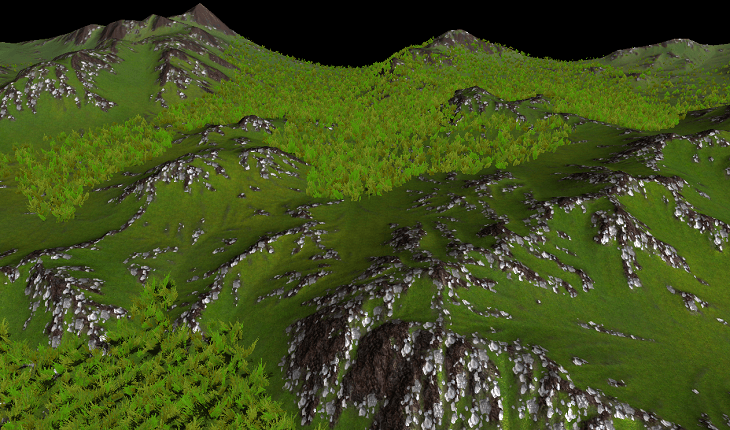grass_02
This article describes the data/samples/objects/grass_02.cpp sample.
The grass_02 sample demonstrates how to place the grass on the terrain according to an image mask, namely:
- Load the terrain
- Add the grass to the editor and make it a child node of the terrain
NoticeIt is also required to enable intersection with parent objects to make the grass grow upon the terrain.
- Set a transformation matrix and assign a material to make the grass visible in the scene
- Specify the required options: maximum visible and fade distances, width and height, step for cells used to render grass, density factor, etc.
- Set the image mask according to which the grass is placed

Grass placed upon the terrain according to the image mask
Notice
In this sample, the samples/common/terrains/terrain_grass.png mask is used.
See Also#
- Article on Grass to learn more about this object
- Functions of the ObjectGrass class
- Functions of the ObjectTerrain class
Last update:
30.04.2019
Помогите сделать статью лучше
Была ли эта статья полезной?
(или выберите слово/фразу и нажмите Ctrl+Enter